Your room is looking lifeless? You want to add some indoor plants to your space but not sure where to start? Look no further.
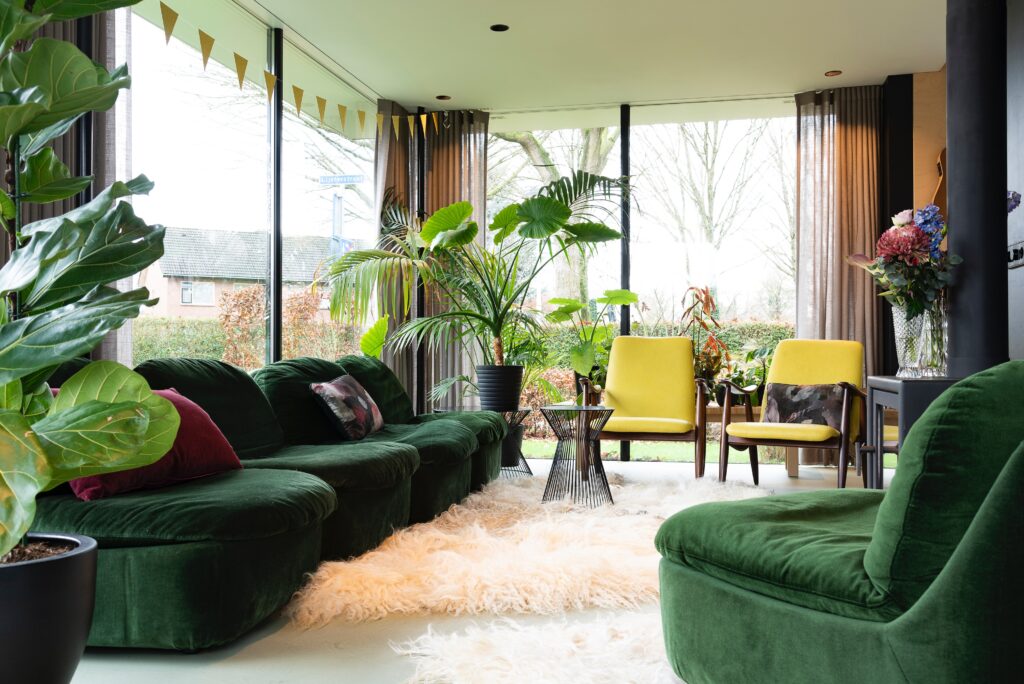
Bringing life to your home with indoor plants can add so much more than just a pop of green. Whether you’re looking to create a tropical oasis or a serene retreat, incorporating plants into your home scheme can have a BIG impact not only in your room scheme but a positive impact on your mental wellbeing too. This has been scientifically proven! Study from 2015
As an, interior designer I love introducing plants in my schemes and here are my top tips to help you green up your life and create a space that makes you feel alive.
Get Texture with leaves
First, think about the texture and pattern of the plants you choose. The texture of a plant refers to the feel and appearance of its leaves, stems, and other foliage. Different plants have different textures, which can greatly affect the overall aesthetic of a room.
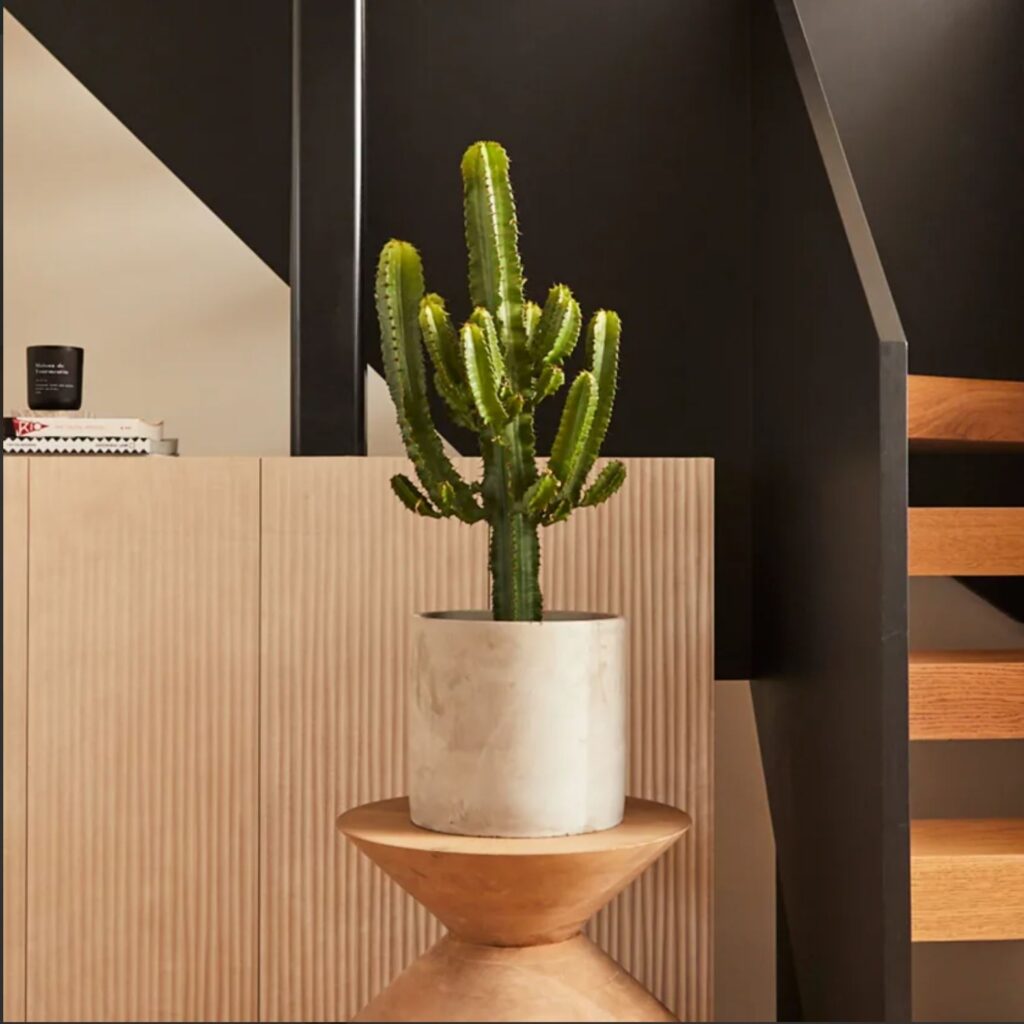
For example, a cactus or succulent has a unique texture with its spiky, rough leaves, which can add an edgy and modern feel to a room. On the other hand, a fern or a Monstera has delicate and lacy leaves that create a more delicate and ethereal feel.
Mix it up with a combination of different textures for example, placing a soft and velvety fern next to a spiky cactus can create a visually striking contrast that draws the eye.
Plant Form Matters
Next, consider the form of the plants you choose. A large, statement-making plant can serve as a focal point in a room, while a series of smaller, trailing plants can add a sense of movement and energy. Using a variety of leaf shapes, such as long and thin, round and chubby, or even curly and wavy. These different leaf shapes can add drama, movement, interest and depth to a room, making it more visually appealing.
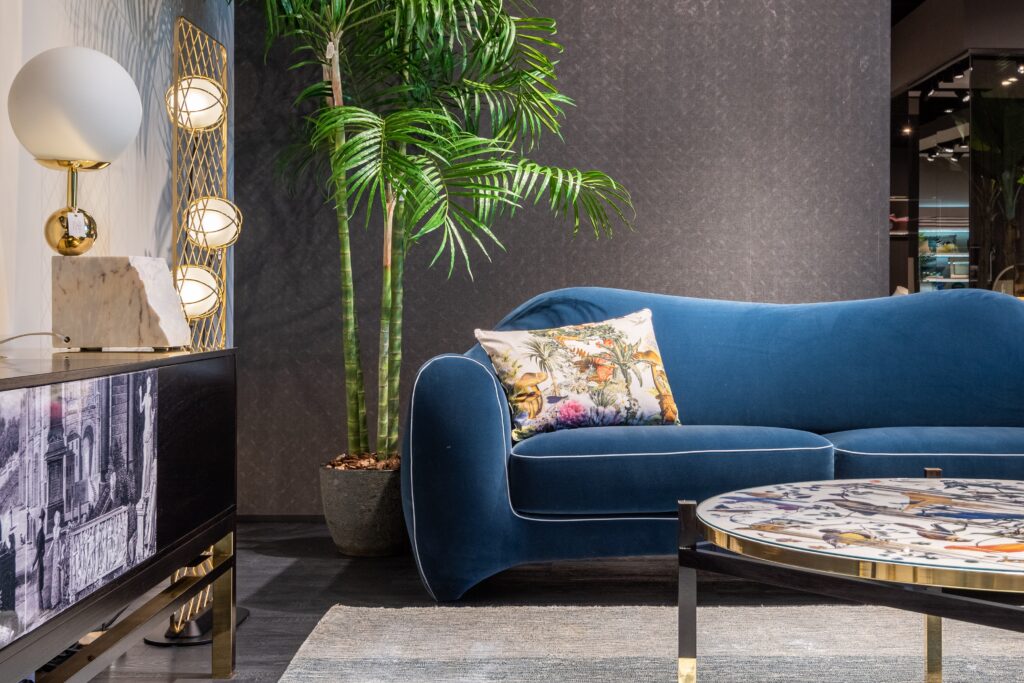
Colour me happy
The colour of a plant refers to the hues of its leaves, flowers, and other foliage. Different plants have different colours, which can greatly affect the overall aesthetic of a room. A grouping of vibrant, tropical plants can bring a pop of colour to a neutral space, while a collection of white or pastel-hued plants can create a soothing and serene atmosphere.
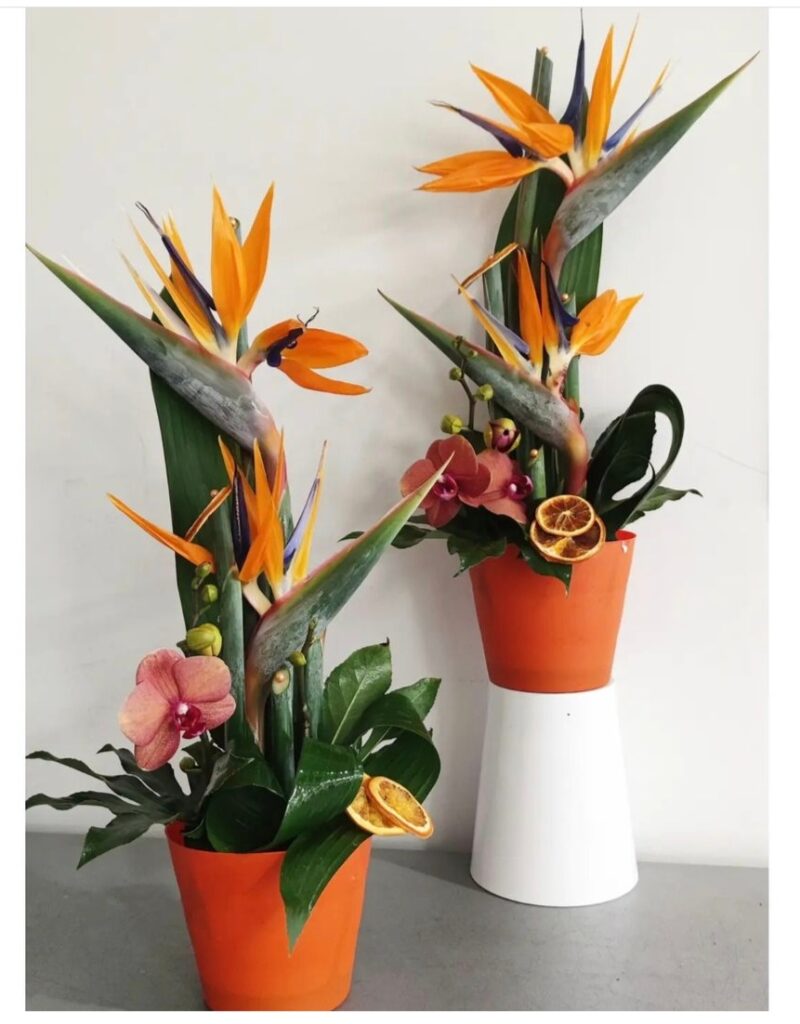
For example, a vibrant tropical plant such as a Bird of Paradise or a Hibiscus can bring a pop of colour to a neutral space, making it feel livelier and inviting. On the other hand, a white or pastel-hued plant such as a white Orchid or a pale pink succulent can create a soothing and serene atmosphere, making it perfect for a bedroom or a spa-like bathroom.
You can also use plants to create a colour scheme in a room. For example, if you want to create a blue and green theme in a room, you can choose plants with blue or green hues like the Blue Echeveria or the Green Cactus. Similarly, you can use plants with different shades of one colour to create a monochromatic theme.
Using plants with contrasting colours can also create an interesting and dynamic feel to a room. For example, placing a deep red orchid next to a bright yellow banana plant can create a visually striking contrast that draws the eye. Go bold for the added wow factor!
Size it up or down with the scale of plants
When it comes to incorporating indoor plants into your home decor, using different sizes of plants can have a significant impact on the overall aesthetic of a room. The size of a plant refers to the height, width, and overall scale of its leaves, flowers, and other foliage. Different plants come in different sizes, which can greatly affect the overall look and feel of a room.
For example, a large, statement-making plant such as a Fiddle-Leaf Fig or a Rubber Plant can serve as a focal point in a room, drawing the eye and adding a sense of drama. This type of plants are perfect for large, open spaces such as living rooms, hallways, and entryways.
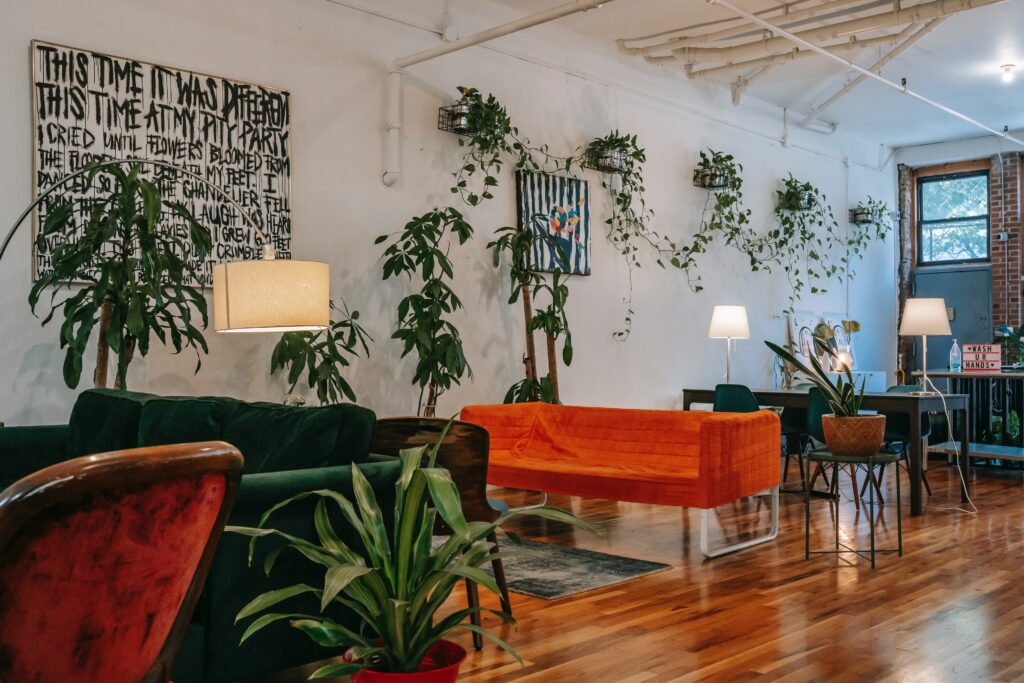
On the other hand, a series of smaller, trailing plants such as the String of Pearls or the String of Hearts can add a sense of movement and energy to a room, creating a dynamic and interesting visual effect. These types of plants are perfect for small spaces or shelves.
Room specific plants
In addition to these aesthetic considerations, it’s also important to think about the practical uses of indoor plants in different rooms of your home. For example, in bathrooms, plants such as English Ivy,
Boston ferns, and Peace Lilies can thrive in the high humidity and indirect light. In bedrooms, plants like Snake plants, Aloe Vera, and Jasmine can improve air quality and promote better sleep.
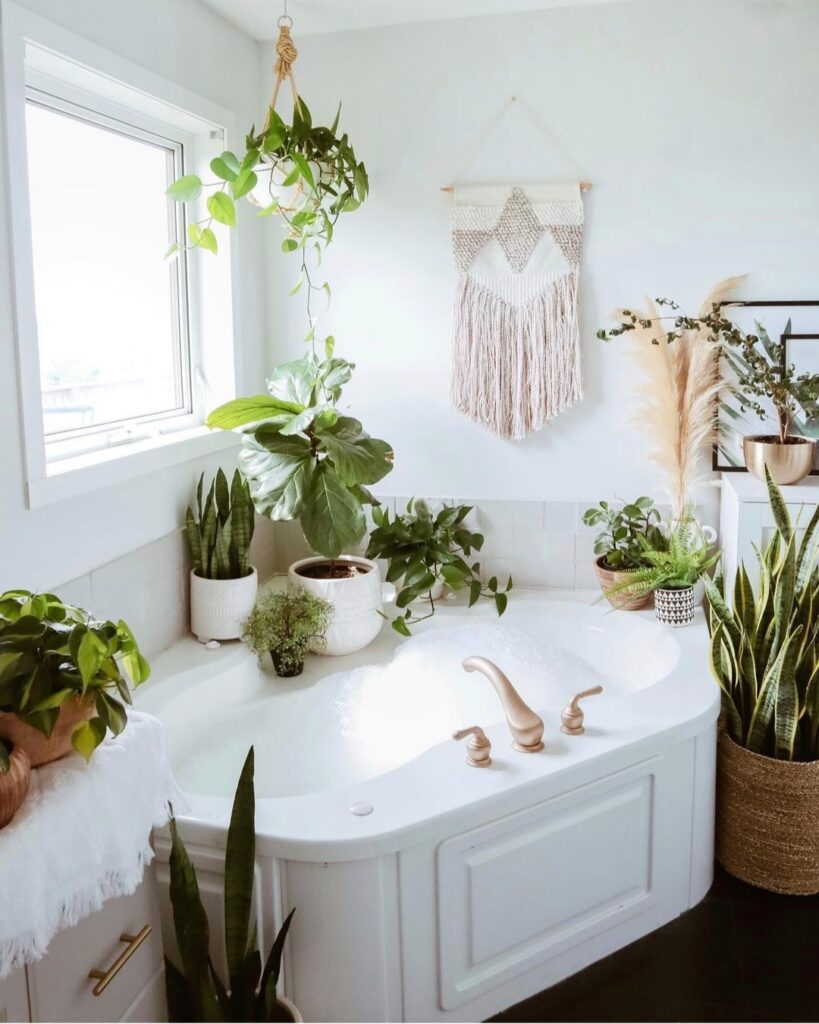
The Surprising benefits of indoor plants!
Here are a few examples:
Emotional connection: When you bring a living plant into your home, you’re bringing a piece of nature into your life. Caring for a plant can give you a sense of purpose and responsibility, and it can also create a sense of connection to the natural world. Brushing past a plant or gently touching its leaves can also be a soothing and calming experience.
Improved mental health: Studies have shown that spending time in nature or around plants can improve mood, reduce stress, and increase feelings of well-being. Bringing plants into your home can also create a sense of calm and serenity, which can help to promote better mental health.
Increased humidity: Many plants release water vapor through a process called transpiration, which can help to increase the humidity in your home. This can be especially beneficial during the dry winter months, when indoor heating can make the air inside your home feel dry and uncomfortable.
Increased productivity: Research suggests that having plants in an office setting can increase productivity and creativity, as well as decrease stress levels.
Interaction: Having plants in your home can also provide opportunities for interaction, whether it is with guests, family, or just yourself. Taking care of plants, pruning them, or just admiring them can be a great way to spend time alone or with others.
So why not bring a touch of the outdoors, indoors, and see how it transforms you and your home from dull to full of life!
Plants should be fun and easy says Patch, a good indoor plants source to shop from.
If you would like some help creating an indoor oasis, do get in touch with me!

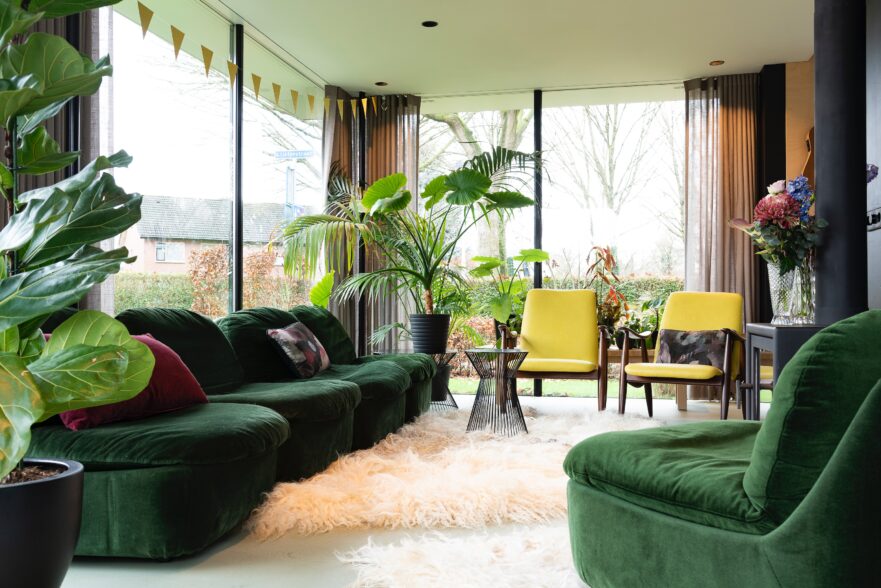
Comments 1
Greetings! Very useful advice in this particular article! Its the little changes that will make the biggest changes. Thanks for sharing!